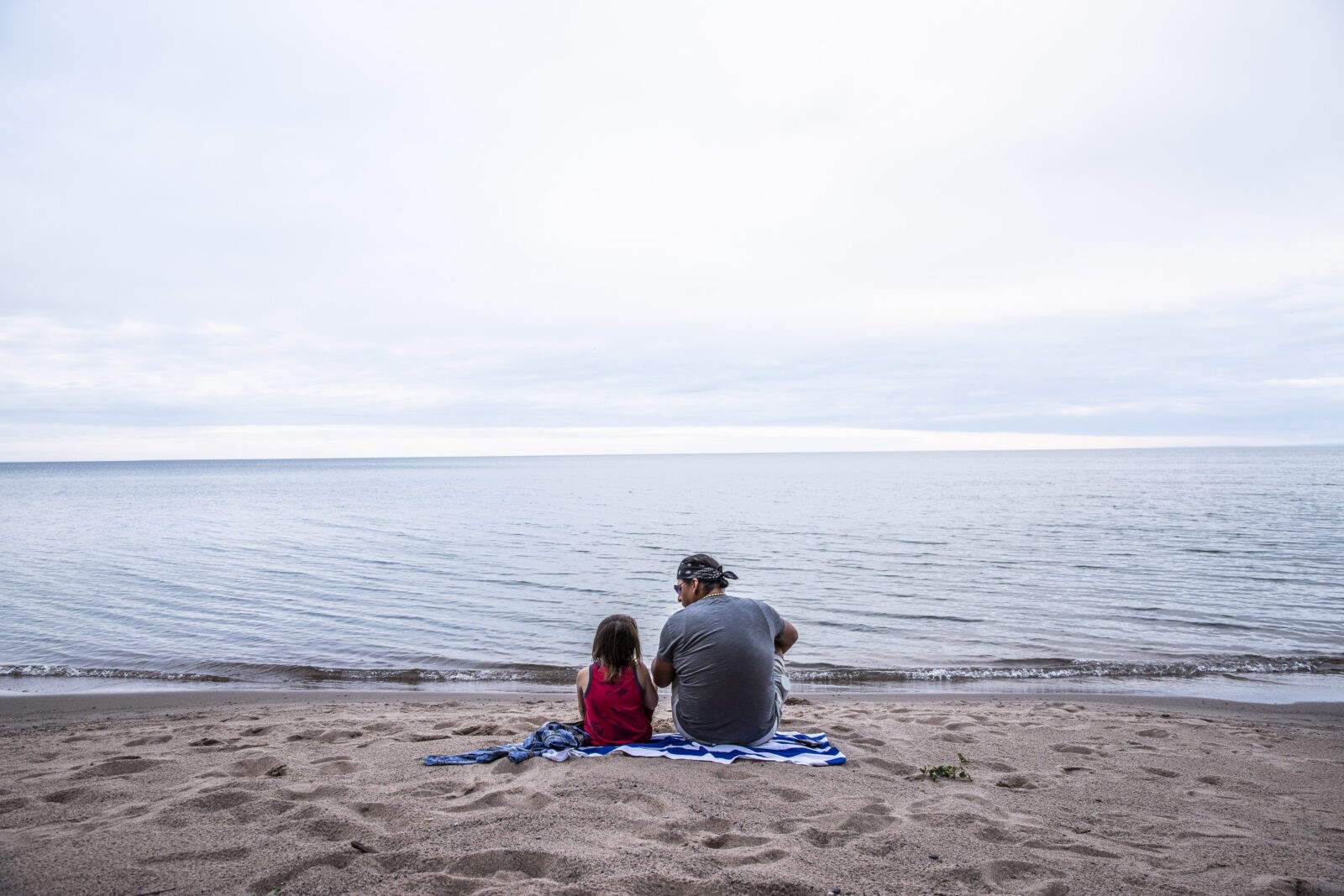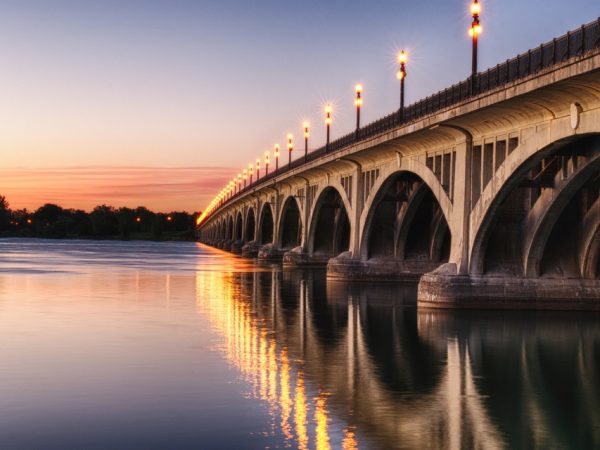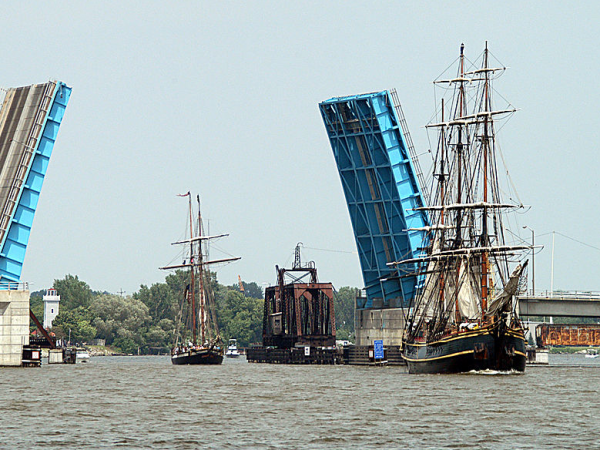
For documentary filmmaker Mary Mazzio, the trek from her first film to making her new release, “Bad River,” took 20 years and included a near-epiphany when the Bostonian first viewed a Lake Superior sunrise. Mazzio, an Olympic rower and attorney, has directed 12 significant films, including the Gracie Award winning “A Most Beautiful Thing.”
“Bad River” will run from March 15-21 in select AMC theaters. The film details the fight of the Bad River Band of Lake Superior Chippewas to shut down the Line 5 oil pipeline that traverses their ancestral land. Great Lakes Now recently spoke with Mazzio, who said it is a “David and Goliath” story.
The interview was conducted on the phone and via email. It was recorded, transcribed, and edited for clarity and length.
Great Lakes Now: You have a significant body of work that precedes your new release, Bad River, and none of those films has an environmental focus. And, you’re from Boston. So, what attracted you to the Bad River Tribe, Lake Superior and the oil pipeline issue?
Mary Mazzio: It began 20 years ago after my first film emerged, A Hero for Daisy, and it got a lot of attention. I received a call from Tuba City, Arizona from a basketball coach on the Navajo reservation. He said he couldn’t get any of his athletes recruited for Division 1 schools. And that there were stereotypical assumptions of what native people are capable of. He asked if I would consider a project. I was a young filmmaker and couldn’t get the funding. His voice has always rang in my head.
Fast forward 20 years and I’m coming off my last film, A Most Beautiful Thing, that also received a lot of attention. I talked to Grant Hill, who was an executive producer, and said I think now is the time for us to dive in and amplify the voices of a Native community. Hill responded yes, he loved the idea.
GLN: The film is historically rich and you spend considerable time in it, putting a spotlight on our collective mistreatment of indigenous people in general, and the Bad River Tribe specifically. Many of the scenes and vignettes are tough to watch. Why was it important to provide that stark depth of context to frame the Line 5 oil pipeline issue for a 2024 audience, who may not be as aware and may not care?
MM: Going into the project I thought we had an extraordinary David and Goliath story over Line 5. I then began interviewing the tribal elders of the Bad River community. Not only did they want to talk about this current battle, they wanted to talk about historical battles. And the stories they shared were all punctuated by resilience, resistance and pride. How they fought back.
Once that started happening, I thought wow, this is hopeful and inspirational. It’s difficult, yes. But this is not rooted in trauma, this is rooted in defiance and resilience. For me, that was incredibly exciting as the stories tumbled forth. They talked about how they fought for their land, culture, and treaty-guaranteed rights. The film went back in time because that’s what tribal elders wanted to talk about, and about the whole continuum as opposed to just this one moment in time.
As a filmmaker, I was working with a group of people and they gave me a generosity of their story. It was incumbent on me to honor what they’re going through and what they wanted to say. So this turned into a completely different project than what I thought it would be.
GLN: The oppression of tribal members that you document reached a “pinnacle” by 1969, according to Edith Leoso, one of the people you interviewed. Then, the Apollo mission landed on the Moon, and it was announced with the famous words: “the Eagle has landed.” Can you describe the importance of that event for the Bad River Tribe and why you included it?
MM: I had asked Edith, the Bad River Band Historic Preservation Officer, about the rise of “Red Power” in the 1960s, and she began to describe a prophecy that, as she recounted, predicted that “Indian people will rise up when the eagle lands on the Moon. But everyone knew that was never going to happen.” Edith then cocked her head and said, “until…” and of course, “the Eagle” did, in fact, land on the moon in 1969.
Her comments were also made in the context of Bad River members, as well as other indigenous peoples from across the country, who began to visibly and actively campaign for Native rights and federal treaty obligations that had largely been ignored in the 1960s and 1970s.
GLN: Enbridge started offering jobs to Tribal members, and that caused some division and weakening of the Tribe’s opposition. Can you elaborate? How much of a threat to unity was that?
MM: Generally speaking, all of the Bad River members that we interviewed were unified in the view that tribal members should avail themselves of any and all economic and employment opportunities, including jobs offered by Enbridge. However, what is unfortunate though not surprising, is that this created some discord, but very few tribal members, to my understanding, are actually employed by Enbridge.
GLN: Line 5 rests on the bottom of Michigan’s Straits of Mackinac, and in 2020, Michigan revoked the easement that allows it to operate. Enbridge did not comply, saying that the federal government is its regulator. That dispute is also mired in legal proceedings with resolution in the far distance.
Anti-pipeline activists have called on the Biden administration to intervene, to no avail. If the Tribes and others can’t get relief from a generally progressive President Biden, is there any hope beside the courts, which can be a roll of the dice?
MM: What’s happening in Michigan is very challenging for the governor, not the least of which is that the easements that Enbridge has under the Straits of Mackinac are perpetual. They’re for forever. And the governor is pursuing a nuisance claim and those are generally difficult to pursue.
The Bad River case differs in that it is very simple as a matter of law. There are six miles of easement over tribal property. Three miles over tribal land and three miles over allotted parcels. That is a huge portion of this pipeline corridor which is 12 miles in length. The rights to operate expired in 2013 and according to the terms of the agreement, Enbridge was required and agreed to remove the pipeline and restore the land. This is a good, old-fashioned American contract. And here we have a Canadian company that is not abiding by the terms they agreed to and that their lawyers negotiated, pure and simple. That’s a very different legal proposition than what’s happening in Michigan.
In the Bad River case, the court effectively found in the Band’s favor by saying this pipeline has to be shut down, we’re just going to give it more time. And the judge found that Enbridge was trespassing and consciously doing so. I’m hopeful that when we get past the 7th Circuit Court, justice will prevail. I have great hope in the legal system because this case is so clearly defined as a matter of law, that justice will prevail.
GLN: While the Tribal members and the pipeline issue are at the core of the film, the backdrop is Lake Superior. How did you see the lake from a filmmaking perspective? Especially since you’re not from the region.
MM: I was first introduced to the mystical characters of the Big Lake when the former chairman of the Bad River Band invited me to the reservation and said, “set the alarm for 3:00 a.m. tomorrow.” The next morning, he took me to Waverly Beach, where he pointed out a place for me to stand. He walked further down the beach, and I was not quite sure what to do. I was fidgety, wondering if I was supposed to be experiencing something, and then it happened. The Sun started to rise over Lake Superior and it was stunning, mesmerizing. And what I felt was profound, something that transcended time and place.
From a filmmaking standpoint, we sought to film using the expanse and beauty and motion of not only the big lake, but of the Bad River, which feeds into Lake Superior, using drones as well as the Alexa camera.
Lake Superior, which is such a precious natural resource, is what the Bad River people are fighting for. Not just for themselves, but for all of us.
GLN: For the average person who sees the film and has only a cursory familiarity with the Line 5 issue and the historic Tribal involvement, what do you hope they will take away from the film?
MM: That’s a hard question. Here’s how I’ll frame it. This is a David and Goliath story. But what the Bad River Band has done with monumental effort is to try and protect one of our most precious natural resources in North America: Lake Superior.
And they’re waging this fight not for themselves, they’ve turned down millions of dollars. They’re doing this on behalf of all Americans. And they’re toiling away in obscurity. Shining a light on their effort and battle was really important.
GLN: Last thoughts?
MM: The Bad River Band’s fight is in many ways reflective of their culture and values. If what they’re doing communally would prompt us to think more about each other and our long-term future together, wouldn’t that be a beautiful thing.
Editor’s note: Mazzio told Great Lakes Now she gave Enbridge the opportunity for an interview for the film project, and she appreciated that they accepted the offer. She declined to comment on Enbidge’s position. She directed Great Lakes Now to “relevant legal pleadings which outline their arguments for continuing to operate beyond the terms of easements which expired in 2013.”
Catch more news at Great Lakes Now:
Study calls for EPA to include human well-being in Great Lakes restoration program
Great Lakes policy advocate calls out Illinois for intransigence on invasive carp solution
Featured image: Waverly Beach, Lake Superior. (Photo Credit: Richard Schultz via 50 EGGS)
1 Comment
-
Excellent info! I posted it on my fb page.




